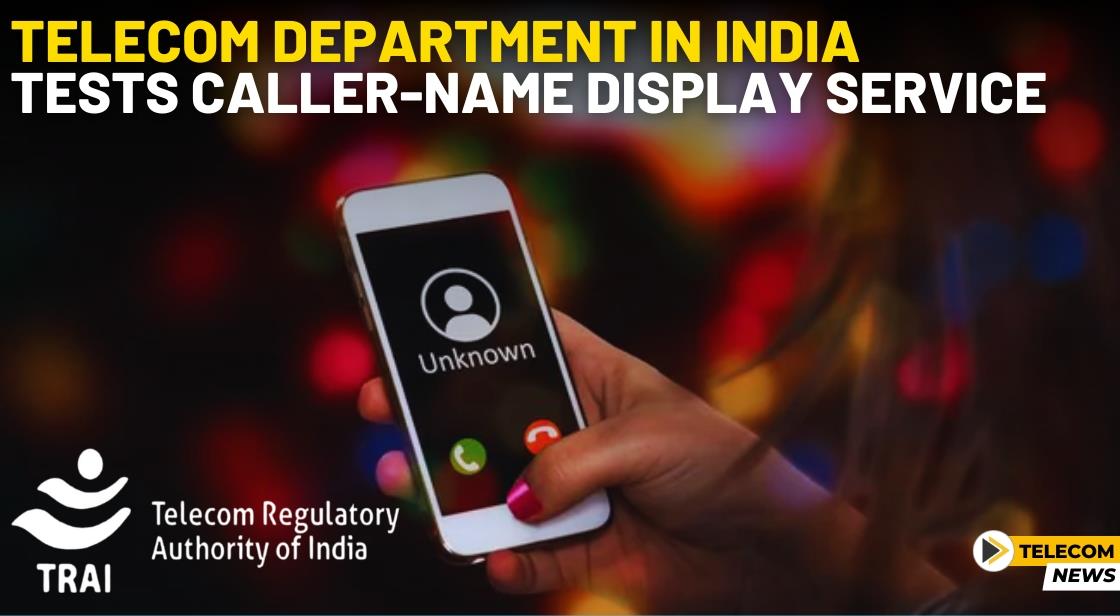Telecom Department in India Tests Caller-Name Display service

News Synopsis
India's Department of Telecommunications (DoT) is taking a step towards curbing the menace of spam calls by initiating trials for a caller name display service. This initiative comes after consultations with the Telecom Regulatory Authority of India (TRAI) and concerns raised by industry stakeholders.
Pilot Program to Evaluate Caller Name Display (CNAP)
As reported by Moneycontrol, the DoT has directed all private telecom operators to begin proof-of-concept (PoC) trials for CNAP within a month. This pilot program will allow the DoT to assess the feasibility and effectiveness of CNAP before implementing it nationwide.
The department is considering two approaches for CNAP implementation: integrating it directly into the telecom network or requiring all mobile handsets sold in India to have a built-in CNAP feature. The PoC trials will help determine the most efficient and user-friendly approach.
TRAI's Recommendation and Timeline
TRAI, the telecom regulator, was consulted by the Department of Telecommunications (DoT) in March 2022 regarding the introduction of CNAP. Following discussions with industry players, Telecom Regulatory Authority of India (TRAI) recommended implementing CNAP by February 2024.
Their recommendation also suggested that all mobile phone handsets sold in India after a designated date should be equipped with CNAP functionality.
Privacy Concerns and Industry Pushback
While CNAP aims to empower users by identifying incoming calls, privacy issues have been raised by telecom companies and the industry body IAMAI during consultations.
Their primary concern is that displaying the name registered on the Know Your Customer (KYC) form could potentially compromise subscriber privacy, particularly for women's safety. Additionally, they expressed concerns about increased call setup time, potential latency issues, and the significant investment required for CNAP implementation.
TRAI's Proposed Solution: "Preferred Name" Option
In response to these concerns, TRAI proposed an alternative approach. They suggested that subscriber entities with bulk and business connections be given the option to display a "preferred name" instead of the name listed on their Customer Application Form (CAF).
This "preferred name" could be a registered trademark with the Ministry of Corporate Affairs, a trade name registered with the GST Council, or any other unique government-registered name. This approach aims to balance the need for call identification with subscriber privacy concerns.
DoT's Multifaceted Approach to Telecommunications
The DoT's focus extends beyond combating spam calls. The department is actively involved in other initiatives aimed at improving India's telecommunications infrastructure and security. These initiatives include:
-
Introducing 5G Services: The DoT is expediting the rollout of 5G services, particularly near airports, to enhance connectivity and cater to the growing demand for high-speed data.
-
Combating Cybercrime: Recognizing the rising threat of cybercrime, the DoT is taking steps to combat it on telecom networks. This includes actions such as banning suspicious WhatsApp accounts and blocking mobile numbers linked to cybercrimes and financial frauds.
By implementing these initiatives, the DoT aims to create a more robust, secure, and user-friendly telecommunications environment for India.
Additional Measures
DoT's Other Initiatives Include 5G Services and Cybercrime Combat
Alongside the CNAP initiative, the DoT is focusing on several other critical areas. These include the introduction of 5G services near airports and efforts to combat cybercrimes on telecom networks. Recently, 577 WhatsApp accounts linked to +92 numbers were banned for impersonating Indian government officials, and 348 mobile numbers across India were blocked due to their involvement in cybercrimes and financial frauds.
Conclusion
The DoT's initiative to trial the CNAP service marks a significant step towards improving the telecom landscape in India. By addressing spam calls and enhancing caller identification, this move is poised to enhance user experience and security. With TRAI's recommendations and ongoing technological advancements, India’s telecom sector is on the brink of a transformative era.
You May Like









